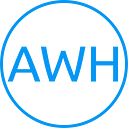Have you ever sat down and took stock of your progress on yearly resolution or projects that you have partially finished and still want to complete?
It was during one of those self-reflections that I finally decided to look into different tools companies utilize to make sure that projects and goals are completed and not left on a shelf, and one tool, in particular, caught my eye. It was Objective and Key Result (OKR), as described by John Doerr. What I find impressive, is that he had taught this tool to large companies, like Google, in their startup period and it’s still being used by many of them today.
OKR
OKR is a tool for setting goals that are meaningful, accountable, and can be implemented independently or collaboratively. What sets this tool apart from other similar tools are defined results for completing objectives. This tool requires you to define the results for completing the objectives, including expectations of what will happen when the objective is complete.
Objective
The Objectives are the defined goals you want to achieve. They are written out to be displayed promptly as a motivational reminder to make progress towards achieving those goals. They can be either broad or narrow in scope to account for any long or short-term goals. The critical consistency is that it holds up to the scrutiny of a review from another individual.
An example would be defining one of the New Year’s resolutions as a long-term objective with a set of expected results expressed. Then start the process of creating additional, short-term OKRs that have a more limited scope to accomplish one of the defined products of the main, or long term, OKR. This process continues until there are OKRs that have a manageable scope with defined Key Results that are actionable and require a reasonable timeframe to continue the momentum towards completing the long term OKR(s).
Key Result
Each Object is required to have at least one expected result that is declared with a metric goal. Including a numeric value as a part of the key result is essential to provide a clear vision of the end goal and a way to enforce accountability and post-analysis.
Accountability
Accountability within the OKR system is not designed to conjure negative feelings or a fear of failure if desired results are not complete. The goal is to grow you as a team member and to provide self-reflection by having another person as a part of the review process during the finalization of the OKR document. Additional check-ins during the OKR’s work in progress and coaching through learned insights during the retrospective all provide exceptional coaching and growth opportunities.
The OKR system is highly beneficial to the organization and the growth of individual team members. This system generates opportunities for coaching and mentorship while highlighting different areas for improvement. The OKR’s are easily measured and improved over time for a higher level of performance. If you or your organization is in need of a better way to pursue and measure organizational and team member goals, consider implementing John Doerr’s OKR system. At AWH, we are committed to providing our clients with the best in product development and we utilize the OKR system to continuously improve our client experience.
Resources/Readings
Measure What Matters by John Doerr: https://www.whatmatters.com/faqs/okr-meaning-definition-example/#:~:text=The%20definition%20of%20%E2%80%9COKRs%E2%80%9D%20is,encourage%20engagement%20around%20measurable%20goals.
